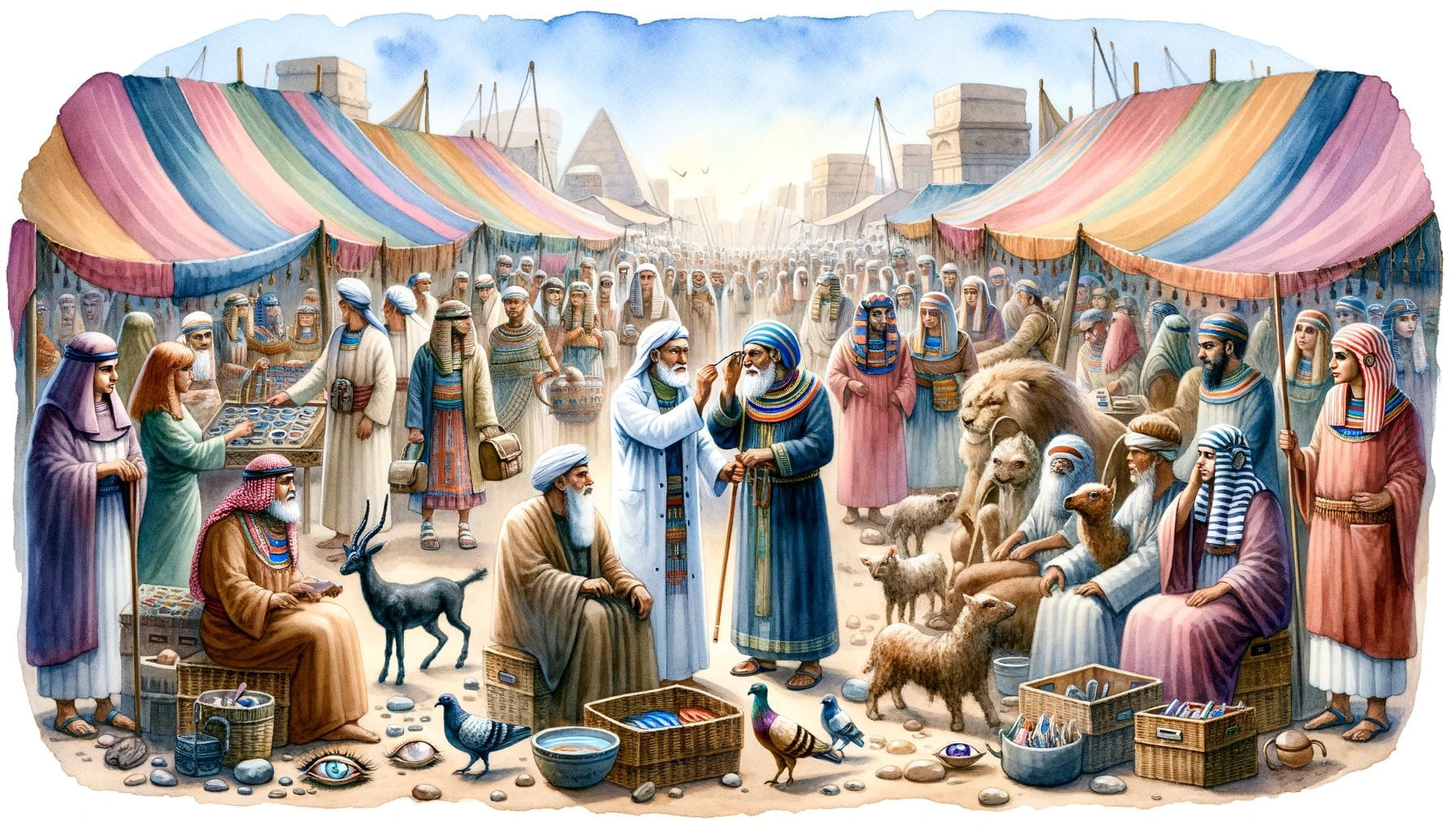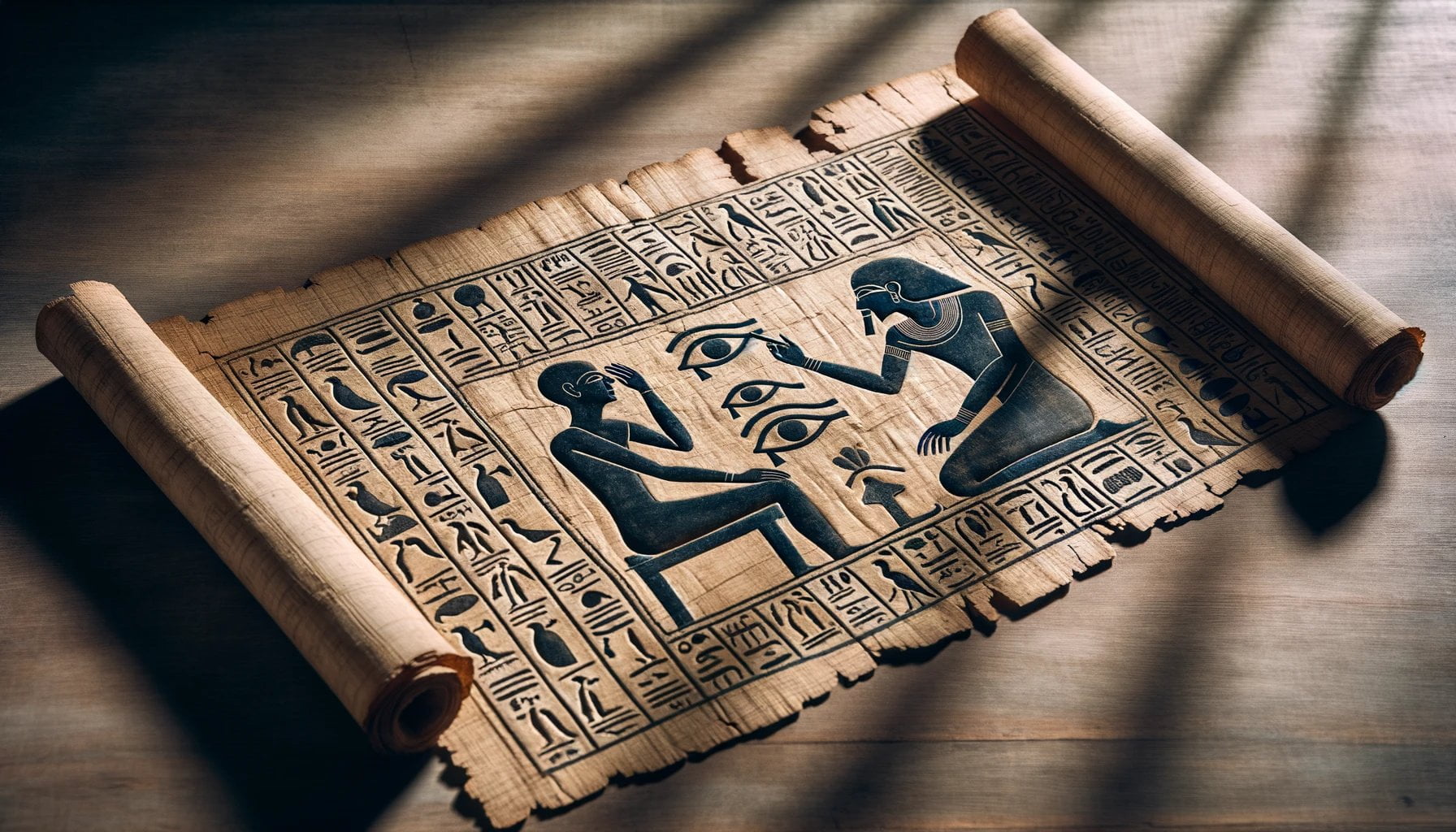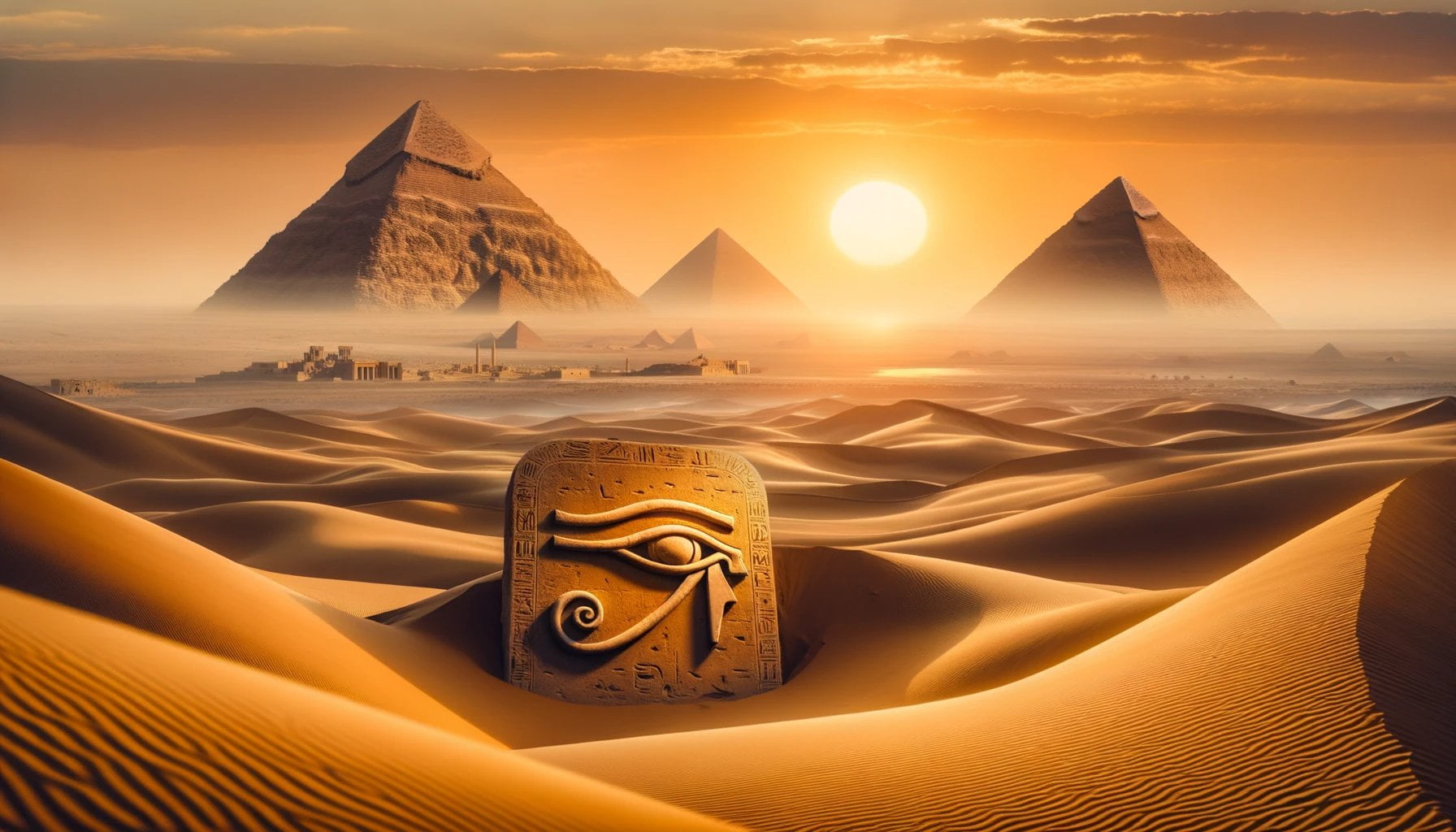Unravel the secrets of ancient Egypt, where colossal pyramids and mysterious hieroglyphics tell the tale of an advanced civilization. At the heart of this ancient land lies a fascinating chapter in medical history. Cataracts, a common ailment that has afflicted human civilization for ages, left its mark on the sands of time in Egypt. Journey with us as we uncover the beginnings of eye surgery in this ancient world, exploring their intriguing practices, beliefs, and the remarkable legacy they bestowed upon the annals of medical knowledge.

Cataracts in Ancient Egypt: A Tale of Water, Wonder, and Medicine
Imagine the Nile River, the lifeblood of ancient Egypt, flowing with such force that it creates a series of tumultuous rapids. These rapids, or “cataracts,” played a monumental role in shaping Egypt’s history, culture, and even its medical knowledge.
The Majestic Six: Guardians and Gateways
The Nile boasted six prominent cataracts, each with its unique significance. The most formidable of all was the First Cataract at Aswan, a natural border between Egypt and Nubia. These cataracts were no ordinary rapids; they were raging walls of water that made travel by boat treacherous and defended Egypt from invaders.
But these barriers also served as gateways. Traders, travelers, and ideas flowed across the cataracts, fostering commerce and cultural exchange. The cataracts controlled the movement of goods and people, allowing Egypt to flourish economically and intellectually.
The Human Eye: Cataracts in a Different Light
While the river cataracts had nothing to do with the medical condition of the same name, the ancient Egyptians possessed a keen understanding of eye diseases. They could diagnose cataracts through careful examination and even developed surgical techniques to treat them.
The Nile’s Vital Embrace
The Nile itself was more than a river; it was the very essence of ancient Egypt. It provided water for crops, transportation for commerce, and nourishment for its people. The cataracts, by regulating the river’s flow, ensured the prosperity and survival of Egypt.
A Legacy That Flows Through Time
The cataracts along the Nile River stood as an embodiment of ancient Egypt’s resilience and ingenuity. They protected the country, facilitated trade, and contributed to advancements in medicine. Their legacy lives on, reminding us of the intertwined forces of nature and human endeavor that shaped the course of history.
The ancient temples of Egypt hold a majestic aura that will transport you back in time. Explore the captivating beauty of these architectural marvels by clicking on Ancient Temples of Egypt. Immerse yourself in the rich history and mystical charm of Egypt’s ancient heritage.
What methods did the ancient Egyptians use to diagnose cataracts?
The clever folks of ancient Egypt had a whole bunch of ways to figure out if someone had cataracts, which is when the lens in your eye gets all cloudy and blurry. Here’s how they did it:
- Ophthalmoscopy: They’d shine a bright light into your eyes to see how the lens looked.
- Slit-lamp examination: They’d use this fancy microscope thing with a tiny beam of light to get a closer look at your eyes.
- Pupillary examination: They’d check the size and shape of your pupils when you looked at different lights.
- Visual acuity testing: They’d test how well you could see things at different distances.
- Tonometry: They’d measure the pressure inside your eyes.
These tests helped ancient Egyptian docs figure out if you had cataracts like Sherlock Holmes figuring out a mystery.
Key Points to Remember:
- Ancient Egyptian doctors used a bunch of smart methods to diagnose cataracts.
- They could tell if you had cataracts really well with these tests.
- Cataracts were a big deal back then, but these ancient doctors knew how to spot them.
Extra Info for the Curious:
Here’s an interesting table that shows how ancient Egyptians treated cataracts.
Is the cataract terminology in ancient Egypt different from what is meant today?
When you think of cataracts, you probably envision a cloudy film forming over your eyes, affecting your vision. But thousands of years ago, the ancient Egyptians used the term “cataracts” to describe something very different – dangerous whirlpools and rapids in the Nile River.
These geological formations were no laughing matter. They posed a formidable challenge to boats trying to navigate the mighty river, often leading to shipwrecks and even death. So, when the Egyptians talked about cataracts, they weren’t describing a medical condition but rather a serious natural hazard.
Fast forward to today, and the word “cataract” has taken on a completely different meaning. It now refers to a condition where the lens of your eye becomes cloudy, causing blurry and dimmed vision. So, you see, the term “cataract” has undergone a complete transformation, going from a geographical obstacle to a medical issue.
The ancient Egyptians, with their advanced knowledge of medicine, understood that cloudy vision could be caused by various factors, including cataracts. They may have diagnosed this condition through visual examinations, but unfortunately, there’s no evidence that they performed any form of cataract surgery.
The distinction between cataracts as geographical and medical terms shows how language and meanings evolve over time. It also highlights the diverse challenges and health concerns that people have faced throughout history and the different ways we’ve described and understood them.
How did ancient Egyptian culture view cataracts and those affected by them?
Cataracts, those cloudy spots that can make it hard to see clearly, weren’t just an eye problem to the ancient Egyptians. They were a symbol of life’s journey, like the changing flow of the mighty Nile River.
Unlike today, cataracts didn’t carry a bad reputation back then. People with cataracts were seen as wise and respected elders, not as outsiders. It was a natural part of getting older, like getting gray hair or wrinkles.
Cataract Care in Ancient Egypt
Even though cataracts were seen as a normal part of aging, the Egyptians didn’t just sit back and let their vision fade away. They knew a lot about cataracts and had their own ways of dealing with them.
Ancient Eye Doctors
Egyptian medical texts had whole sections on how to spot and treat cataracts. Doctors would check your eyes, ask you how well you could see, and then give you advice based on what they found.
Cataract Surgery
There’s some evidence that they even tried to remove cataracts with surgery. They had tools that look like the ones we use today, but we’re not sure how good they were at it. We haven’t found any proof that they successfully fixed cataracts back then.
Other Treatments
Not everyone wanted surgery, so the Egyptians had other ways to help with cataracts. They used eye drops made from honey, copper, and other stuff that might have helped reduce swelling and keep the eyes healthy. They also used ointments and powders to soothe the eyes.
Preventing Cataracts
The Egyptians were also big on prevention. They knew that sunlight could damage their eyes, so they wore sunglasses made from wood or bone. They also took good care of their general health, because they knew that infections could lead to eye problems.
Conclusion
Ancient Egyptians had a deep understanding of cataracts and showed compassion to those who had them. They didn’t always have perfect treatments, but they tried their best to help each other see through the cloudy parts of life.
Key Points:
- Cataracts were seen as a natural part of aging.
- People with cataracts were respected and treated with compassion.
- Egyptians had medical knowledge about cataracts and developed treatments.
- Cataract surgery was attempted, but its success is uncertain.
- Non-invasive treatments like eye drops and ointments were commonly used.
- Preventive measures like sunglasses and hygiene were important.

FAQ
Q1: How did ancient Egyptians understand cataracts?
A1: Ancient Egyptians recognized cataracts through visual examination of the eyes, understanding them as an age-related condition or the result of excessive exposure to outdoor work.
Q2: Were cataracts a common ailment in ancient Egypt?
A2: Cataracts were a prevalent health concern, particularly among elderly individuals and those engaged in outdoor labor, as the harsh Egyptian climate and wind contributed to the condition’s development.
Q3: What were the treatments for cataracts in ancient Egypt?
A3: While there is no concrete evidence of cataract surgery being performed in ancient Egypt, medical texts and surgical instruments discovered suggest that attempts were made to treat cataracts. These treatments likely involved non-invasive measures such as massage, eye drops, and herbal remedies.
Q4: Did cataracts pose challenges to ancient Egyptians?
A4: The Nile River’s cataracts, natural rocky rapids, were a significant obstacle to navigation, hindering the movement of ships and trade along the river. However, the ancient Egyptians developed innovative solutions, such as canals and specialized boats, to overcome these obstacles.
Q5: How did ancient Egyptians protect themselves from cataracts?
A5: While no specific measures are documented, ancient Egyptians likely took precautions to minimize their risk of cataracts by wearing protective eye coverings or sunglasses, especially during outdoor work. Additionally, their diet, rich in nutrients such as vitamin A, may have contributed to maintaining eye health.
- Unlocking 2-Letter Words with U: The Definitive Guide - April 4, 2025
- Unlock Words with the Letters THREE: Top Unscramble Tools 2025 - April 4, 2025
- Master Scrabble: X & Z Words for High Scores - April 4, 2025
















